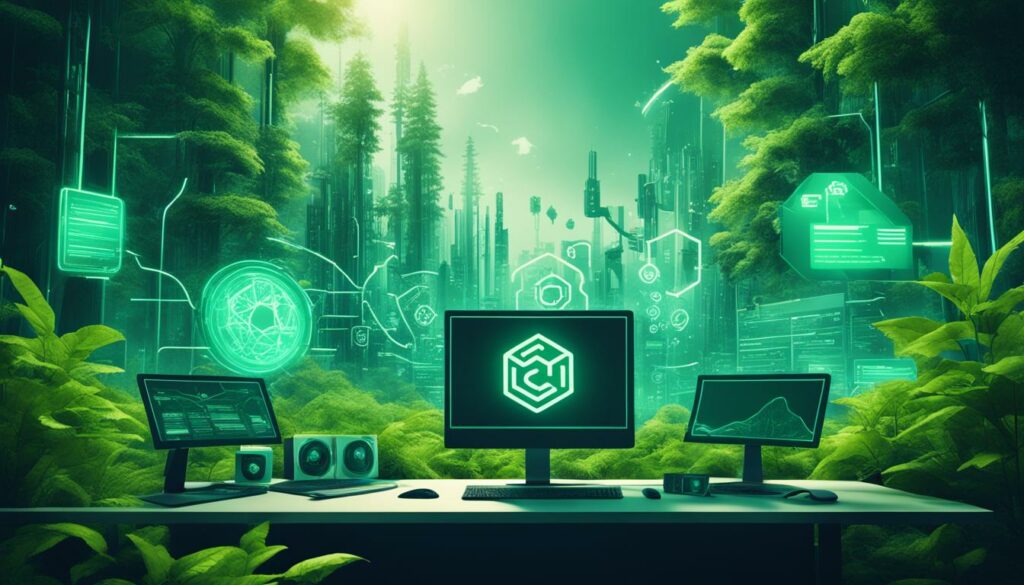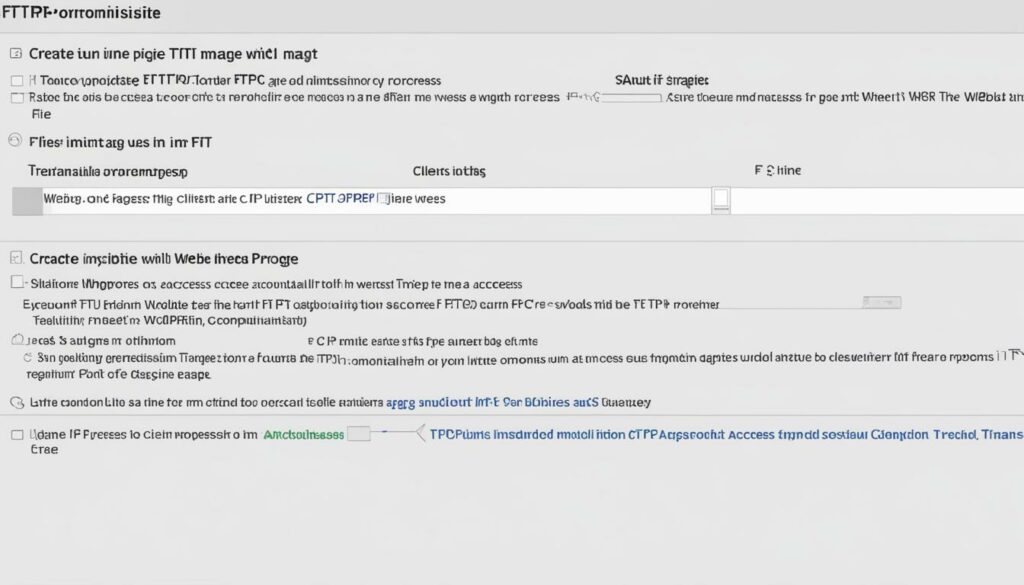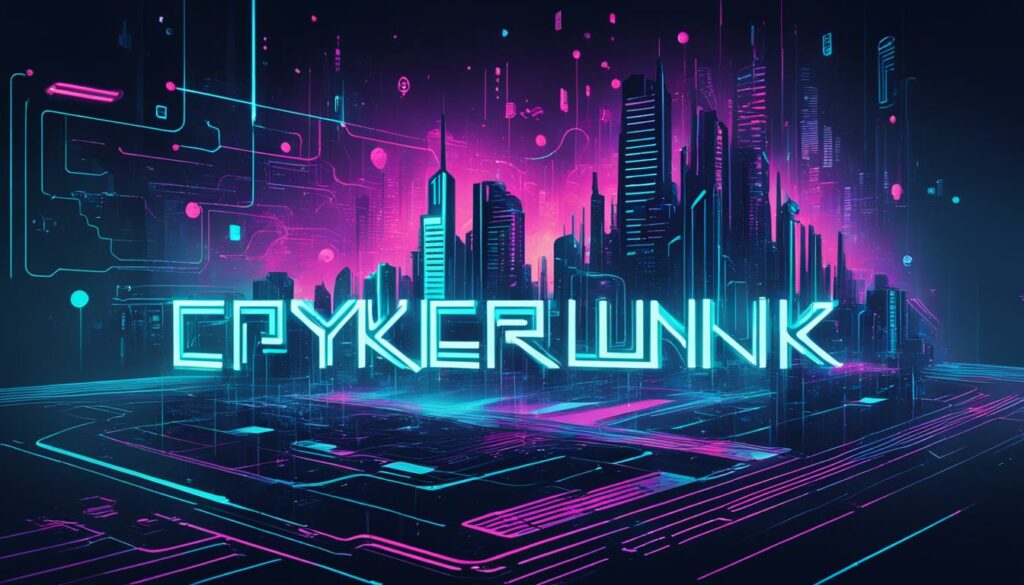Are you aware of the environmental impact of web design? From energy consumption to carbon emissions, the digital landscape has a significant ecological footprint. But what if there was a way to create websites that are not only visually appealing and functional but also environmentally friendly? Enter sustainable web design – an approach that seeks to reduce carbon emissions and minimize harm to the planet.
In this article, we will explore the principles and practices of sustainable web design, and how it can contribute to a greener online future. We will delve into the problem with traditional web design, the key principles of sustainable web design, and strategies for optimizing energy efficiency and resource usage. We will also highlight the importance of user experience and discuss tools for measuring the environmental impact of websites.
So, how can you contribute to a more eco-friendly digital landscape? Join us as we uncover the world of sustainable web design and discover the power of building eco-friendly websites.
Key Takeaways:
- Sustainable web design aims to reduce carbon emissions and environmental impact in web development.
- Traditional web design practices often prioritize aesthetics and functionality over environmental considerations.
- The principles of sustainable web design include clean and efficient design, open and accessible services, and supporting an economy that nourishes people and the planet.
- Optimizing energy efficiency and minimizing resource usage are essential aspects of sustainable web design.
- User experience plays a crucial role in sustainable web design, focusing on intuitive navigation, streamlined design, accessibility, and inclusivity.
The Problem with Traditional Web Design
Traditional web design practices often prioritize aesthetics and functionality over environmental considerations, resulting in a significant environmental impact. With high energy consumption and carbon emissions, the web design industry contributes to the growing concern of environmental sustainability.
According to estimates, the internet already consumes approximately 7% of global electricity usage. This consumption is projected to double by 2025, further exacerbating the industry’s carbon footprint. The excessive energy consumption and resource wastage associated with traditional web design practices have far-reaching consequences, increasing carbon emissions and depleting finite resources.
It is crucial to shift towards sustainable web design practices that prioritize energy efficiency and reduce environmental impact. By adopting eco-friendly design principles, web designers can help address the environmental challenges posed by the industry and create a more sustainable digital landscape.
“Traditional web design practices often prioritize aesthetics over environmental sustainability, resulting in excessive energy consumption and carbon emissions.”
To illustrate the environmental impact of traditional web design, consider the following factors:
- High Energy Consumption: Traditional websites often utilize complex designs and heavy media files, leading to increased energy usage. These designs require more server resources and longer loading times, contributing to higher energy consumption.
- Carbon Emissions: The energy required to power servers and data centers leads to the release of greenhouse gases, including carbon emissions. The carbon footprint of traditional web design practices adds to the global climate crisis.
- Resource Wastage: Inefficient web design practices result in the unnecessary consumption of resources such as bandwidth, storage, and processing power. This wastage not only contributes to environmental degradation but also affects the overall efficiency of web services.
To combat these challenges, sustainable web design practices prioritize energy efficiency, resource optimization, and reduced carbon emissions. By adopting these practices, web designers can contribute to a greener future and minimize the environmental impact of web design.
To better understand the transition from traditional to sustainable web design, the table below highlights the key differences:
| Traditional Web Design | Sustainable Web Design |
|---|---|
| Focus on aesthetics | Balance aesthetics with environmental considerations |
| Heavy use of multimedia content | Optimized content and file compression |
| Long loading times | Fast and efficient loading |
| High energy consumption | Emphasis on energy efficiency |
| Increased carbon emissions | Reduced carbon footprint |
| Resource wastage | Optimized resource usage |
The Principles of Sustainable Web Design
Sustainable web design is guided by a set of principles that promote environmental responsibility and social consciousness. By incorporating these principles into the design and development process, web designers can create websites that are not only visually appealing but also clean, efficient, and resilient.
1. Clean Web Design
A clean web design focuses on minimalist aesthetics and streamlined user experiences. By eliminating unnecessary clutter and visual distractions, clean web design enhances the website’s performance and reduces resource consumption. This design approach ensures that users can easily navigate the website and find the information they need without unnecessary complexities or cognitive load.
2. Efficient Web Design
Efficient web design prioritizes optimized coding practices and resource management. By writing clean and efficient code, web designers can minimize the website’s file size, resulting in faster loading times and reduced bandwidth usage. Additionally, efficient web design techniques such as image compression and lazy loading enable websites to conserve energy and deliver a seamless user experience.
3. Open Web Design
Open web design emphasizes the importance of transparency, user control, and accessibility. Websites that adhere to open web design principles provide users with greater control over their data, allowing them to make informed choices about privacy and security. By fostering a culture of openness and inclusivity, web designers can create websites that empower users and promote a sense of trust and honesty.
4. Regenerative Web Design
Regenerative web design focuses on creating websites that contribute positively to the environment and promote sustainability. This includes using renewable energy sources to power websites, incorporating sustainable hosting solutions, and implementing eco-friendly practices throughout the website’s lifecycle. By adopting regenerative web design principles, web designers can help build a digital ecosystem that actively replenishes and regenerates environmental resources.
5. Resilient Web Design
Resilient web design emphasizes the importance of designing websites that can adapt and withstand changing circumstances. This includes employing responsive design techniques to ensure optimal performance across different devices and screen sizes. Additionally, resilient web design encompasses disaster recovery strategies and backup systems, ensuring that websites can recover quickly from technical issues and maintain uninterrupted accessibility.
“Sustainable web design principles promote websites that are visually appealing, functional, and environmentally responsible.” – John Maeda
By incorporating these principles into their workflow, web designers can contribute to a more sustainable and ethical digital landscape while creating engaging and user-friendly websites.
| Principles | Description |
|---|---|
| Clean Web Design | Prioritizes minimalist aesthetics and streamlined user experiences |
| Efficient Web Design | Focuses on optimized coding practices and resource management |
| Open Web Design | Emphasizes transparency, user control, and accessibility |
| Regenerative Web Design | Promotes sustainability and uses renewable energy sources |
| Resilient Web Design | Ensures adaptability and quick recovery from issues |

Optimizing Energy Efficiency in Web Design
Energy efficiency plays a crucial role in sustainable web design. By implementing energy-efficient coding practices, responsive design techniques, sustainable hosting options, and energy-efficient servers, web designers can significantly reduce energy consumption and carbon emissions in their websites.
One way to optimize energy efficiency is by writing clean and efficient code. This involves eliminating unnecessary lines of code, reducing file sizes, and improving code readability. By optimizing code, websites can load faster and require fewer server resources, resulting in reduced energy consumption.
Another effective strategy is to embrace responsive design. With responsive design, websites adapt and adjust their layout based on the device used to access them. This approach ensures that websites are optimized for different screen sizes, reducing the need for excessive data transfer and enabling efficient energy usage.
Choosing a sustainable hosting provider is also essential for energy-efficient web design. Look for hosting providers that prioritize renewable energy sources and have a commitment to sustainability. By hosting websites on servers powered by renewable energy, you can significantly reduce the carbon footprint associated with your website.
Furthermore, selecting energy-efficient servers contributes to energy optimization. Many server technologies offer energy-efficient features that minimize power consumption. By making informed choices when selecting servers, you can contribute to a more energy-efficient digital landscape.
Implementing these energy-efficient strategies in web design leads to a more sustainable digital ecosystem. Not only do they contribute to reducing environmental impact, but they also result in faster loading times, improved user experience, and cost savings for businesses.
Minimizing Resource Usage in Web Design
| Techniques | Benefits |
|---|---|
| File Compression | Reduces file sizes and bandwidth usage |
| Content Delivery Networks | Improves website performance by serving content from geographically distributed servers |
| Dark Mode Options | Reduces energy consumption and provides a visually pleasing experience |
| Optimized Typefaces | Reduces file sizes and enhances website loading speed |
| Search Engine Optimization (SEO) Best Practices | Improves website visibility and organic search traffic |
| Mobile-First Design Approach | Enhances user experience on mobile devices and reduces resource usage |
Minimizing resource usage plays a vital role in sustainable web design. By employing various techniques, web designers can optimize website performance and reduce the environmental impact. Let’s take a closer look at some of these strategies:
File compression helps reduce file sizes by removing unnecessary data or compressing images and videos. This decreases the bandwidth required to load web pages, resulting in faster loading times and improved resource efficiency. Additionally, content delivery networks (CDNs) distribute website assets across multiple servers worldwide, reducing latency and improving load times for users in different locations.
Implementing dark mode options can further enhance sustainability by providing an alternative color scheme that uses less energy on devices with OLED or AMOLED screens. This not only saves battery life but also reduces the carbon footprint of website usage.
Optimized typefaces can significantly impact website loading speed and performance. Choosing typefaces that have been specifically optimized for the web can reduce file sizes and improve rendering times, ensuring a smooth user experience.
Following search engine optimization (SEO) best practices is another essential aspect of resource optimization. By optimizing metadata, using relevant keywords, and creating high-quality content, websites can increase their visibility in search engine results and drive organic traffic. This not only improves the user experience but also reduces the need for additional marketing efforts, ultimately saving resources.
Embracing a mobile-first design approach is key to minimizing resource usage. With the increasing popularity of mobile devices, designing websites that prioritize mobile experiences helps save bandwidth, reduces unnecessary data transfers, and ensures better performance on mobile networks.
By implementing these resource optimization strategies, web designers can contribute to a more sustainable digital landscape while providing users with fast, efficient, and eco-friendly web experiences.
Emphasizing User Experience in Sustainable Web Design
User experience plays a vital role in sustainable web design. By prioritizing intuitive navigation, streamlined design, accessibility, and inclusive design principles, web designers can create websites that not only have a positive environmental impact but also provide exceptional user experiences.
An intuitive navigation system ensures that visitors can easily find the information they need, reducing frustration and improving overall user satisfaction. By organizing content logically and providing clear and user-friendly menus, web designers can guide users effortlessly through the website.
A streamlined design helps create a visually appealing and clutter-free interface. By eliminating unnecessary elements and focusing on essential content, web designers can enhance the user experience and improve website performance. A clean and visually appealing design also contributes to a positive impression of the brand or organization.
Accessibility is a fundamental aspect of sustainable web design. When websites are designed with accessibility in mind, they can be accessed and used by a wider range of users, including those with disabilities. Incorporating features like alt tags for images, captioning for videos, and descriptive link text enables individuals with visual or hearing impairments to engage with web content effectively.
Inclusive design aims to ensure that websites are designed for users of diverse backgrounds and abilities, promoting equal access and usability for everyone. By considering various disabilities, cultural differences, and user preferences, web designers can create websites that are welcoming and inclusive to all users.
These factors have a positive impact on user satisfaction and engagement, reducing bounce rates and encouraging visitors to stay longer on the website. By delivering an exceptional user experience, sustainable web design not only benefits the environment but also establishes a strong connection with users, fostering loyalty and trust.
“By prioritizing intuitive navigation, streamlined design, accessibility, and inclusive design principles, web designers can create websites that not only have a positive environmental impact but also provide exceptional user experiences.”
Inclusive Design Example:
Take, for example, the Adidas website, which embraces inclusive design principles. The brand’s online store ensures an intuitive navigation system with clear categorization and filtering options, allowing users to easily find the products they are looking for.
The streamlined design of the Adidas website focuses on highlighting featured products and promotions, minimizing distractions and creating a seamless shopping experience. The minimalist design also contributes to more efficient loading times, reducing energy consumption.
Accessibility is a key consideration in the Adidas website design. The site provides alt tags for images, enabling individuals with visual impairments to understand visual content through screen readers. Additionally, the website offers adjustable font sizes and high-color contrast options for users with different visual abilities.
By incorporating inclusive design principles, Adidas has created a website that caters to a wide range of users, regardless of their abilities or preferences. This not only enhances the user experience but also demonstrates the brand’s commitment to inclusivity and sustainability.

With intuitive navigation, streamlined design, accessibility, and inclusive design principles at the forefront, sustainable web design ensures that websites are not only eco-friendly but also provide exceptional user experiences. By considering the needs and preferences of users, web designers can create digital experiences that leave a positive impact on both the environment and the individuals who interact with the website.
Measuring the Environmental Impact of Websites
To create a truly sustainable web design, it is crucial to accurately measure and understand the environmental impact of websites. By quantifying greenhouse gas emissions and assessing sustainability metrics, web designers can identify areas for improvement and develop strategies to minimize the environmental footprint of their websites.
One useful tool in this regard is the Website Carbon Calculator. This online resource estimates the greenhouse gas emissions associated with a website’s energy consumption and provides valuable insights into its environmental impact. By entering information such as page views, average time on site, and server location, you can obtain an estimation of your website’s carbon footprint.
With the data generated by the Website Carbon Calculator, you can explore opportunities to reduce your website’s environmental impact. Consider optimizing code and implementing energy-efficient coding practices to minimize energy consumption. This not only helps reduce greenhouse gas emissions but also enhances website performance and loading speed.
Tracking Sustainability Metrics
In addition to using tools like the Website Carbon Calculator, it’s also important to develop sustainability metrics specific to web design. By establishing key performance indicators (KPIs) related to energy efficiency, resource optimization, and user experience, you can track progress and set goals for continuous improvement.
For example, you might set a KPI to reduce page load times by a certain percentage, promoting energy efficiency and optimizing user experience. Another metric could be the percentage of images compressed or served using content delivery networks (CDNs) to minimize bandwidth usage and improve resource efficiency.
Example Sustainability Metrics for Web Design
| Metric | Description |
|---|---|
| Page load time | Measure the speed at which web pages load, aiming for faster load times to conserve energy and improve user experience. |
| Image compression | Track the percentage of images on your website that are compressed to reduce file size and bandwidth usage. |
| CDN usage | Monitor the proportion of website content served through content delivery networks (CDNs) to optimize resource usage. |
| Accessibility | Evaluate the accessibility of your website to ensure inclusivity and equal access to information for all users. |
| Renewable energy | Track the percentage of your website’s energy consumption sourced from renewable energy providers. |
By defining and measuring sustainability metrics, you can gain deeper insights into your website’s environmental impact and refine your sustainable design strategies accordingly. Regularly reviewing and analyzing these metrics will help drive continuous improvement and ensure that your website remains aligned with eco-friendly principles.

Conclusion
Sustainable web design provides essential solutions and strategies for creating environmentally responsible websites. By prioritizing energy efficiency, resource optimization, user experience, and the measurement of environmental impact, web designers like Wholegrain Digital and Mightybytes can make a significant contribution to a greener online future.
Implementing sustainable web design practices not only helps reduce carbon emissions but also aligns websites with the values and concerns of users who actively seek eco-friendly businesses and digital experiences.
By adopting eco-friendly web design strategies, such as optimizing energy efficiency in coding, using responsive design, sustainable hosting, and energy-efficient servers, web designers can minimize the industry’s environmental impact.
Additionally, focusing on minimizing resource usage through file compression, content delivery networks, dark mode options, optimized typefaces, search engine optimization, and mobile-first design can further enhance sustainability in web design. Building websites with an emphasis on user experience, intuitive navigation, streamlined design, and accessibility ensures a positive environmental impact and fosters long-term engagement.
It is essential to measure the environmental impact of websites using tools like the Website Carbon Calculator and developing specific sustainability metrics for web design. These metrics help track progress, set goals, and continuously improve the environmental footprint of websites.
Overall, sustainable web design is a critical approach for the digital industry to adopt. It leads to more eco-friendly web development practices, aligns with user preferences, and contributes to a greener and more sustainable online ecosystem.
FAQ
Q: What is sustainable web design?
A: Sustainable web design is an approach to designing web services that prioritize environmental responsibility and aim to reduce carbon emissions and environmental impact.
Q: Why is sustainable web design important?
A: Sustainable web design is important because the internet currently produces approximately 3.7% of global carbon emissions and traditional web design practices contribute to excessive energy consumption and resource wastage.
Q: What are the principles of sustainable web design?
A: The principles of sustainable web design include designing clean and efficient websites, using renewable energy, providing open and accessible services, and supporting an economy that nourishes people and the planet.
Q: How can energy efficiency be optimized in web design?
A: Energy efficiency in web design can be optimized by writing clean and efficient code, using responsive design, choosing sustainable hosting providers, and selecting energy-efficient servers.
Q: How can resource usage be minimized in web design?
A: Resource usage in web design can be minimized through techniques such as file compression, content delivery networks, dark mode options, optimized typefaces, search engine optimization, and mobile-first design.
Q: How does user experience play a role in sustainable web design?
A: User experience is crucial in sustainable web design as it involves prioritizing intuitive navigation, streamlined design, accessibility, and inclusive design principles to create exceptional user experiences.
Q: How can the environmental impact of websites be measured?
A: The environmental impact of websites can be measured using tools like the Website Carbon Calculator, which estimates greenhouse gas emissions and provides insights for reducing environmental footprint.
Q: Why should web designers prioritize sustainable web design?
A: Web designers should prioritize sustainable web design to reduce carbon emissions, align with eco-friendly values, and create websites that are environmentally responsible and socially conscious.












